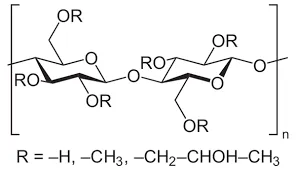
Nov . 09, 2024 17:20 Back to list
Exploring the Benefits of Mortar Bonding Agents in Construction Applications
Understanding Mortar Bonding Agents Enhancing Construction Durability
In the realm of construction and masonry, the choice of materials can significantly influence the durability and quality of a structure. Among these materials, mortar plays a critical role, serving as the binding agent that holds bricks, stones, and blocks together. However, not all mortars are created equal, and that’s where the importance of mortar bonding agents comes into play.
Mortar bonding agents are specialized compounds designed to enhance the adhesion properties of mortar. They are particularly beneficial when bonding new mortar to existing substrates or when working with extremely smooth surfaces that require additional assistance for effective adhesion. These agents can be crucial in a variety of construction applications, including brick laying, tile setting, and in the repair of existing surfaces.
The Composition and Functionality of Bonding Agents
Mortar bonding agents are typically formulated from latex, acrylic, or other polymer emulsions that improve the physical properties of the mortar. When mixed with the mortar, these agents create a more cohesive mixture that improves adhesion, reduces the porosity of the mortar, and increases the overall durability of the bond.
One of the primary benefits of using bonding agents is their ability to create a strong interface between new and old materials. In cases where surface preparation is not ideal, such as on very smooth or non-absorbent surfaces, bonding agents provide the necessary grip for the mortar. This is particularly important in repair work, where the new mortar must securely adhere to existing structures to prevent failure over time.
Applications of Mortar Bonding Agents
Mortar bonding agents are commonly used in various applications across the construction industry. For instance, they are essential in tile installations where cement-bonded mortars are applied over existing surfaces like concrete, bricks, or other tile substrates. In such scenarios, adding a bonding agent can dramatically increase the overall adhesion strength, minimizing the risk of delamination or cracking.
mortar bonding agent

In masonry repair projects, bonding agents allow for the seamless integration of new mortar with old, ensuring structural integrity and aesthetic uniformity. They are particularly useful in restoration projects where maintaining the original appearance while enhancing performance is crucial.
Moreover, in cold weather conditions where the curing process can be adversely affected, bonding agents can help accelerate the setting of the mortar. This ensures that constructions remain on schedule despite challenging environmental conditions.
Choosing the Right Mortar Bonding Agent
When selecting a mortar bonding agent, it is vital to consider the specific requirements of your project. Different formulations may cater to various substrates, environmental conditions, and types of mortar. For example, a water-based bonding agent may suffice for interior applications, while a solvent-based option might be necessary for exterior uses due to its enhanced resistance to moisture and temperature fluctuations.
Additionally, compatibility with existing materials is essential. Always check the manufacturer’s guidelines to ensure that the bonding agent is suitable for the intended surfaces and will not adversely affect them.
Conclusion Enhancing Performance Through Innovation
The incorporation of mortar bonding agents into construction practices is a testament to the industry's ongoing commitment to quality and performance. By enhancing adhesion, durability, and overall structural integrity, these agents are indispensable tools for builders and contractors alike. As the construction industry continues to evolve, the importance of choosing the right materials and techniques to ensure the longevity and safety of structures cannot be overstated.
In summary, mortar bonding agents stand as a pivotal component in modern masonry and construction techniques, providing both functional and aesthetic benefits. Their role in enhancing adhesion and reducing the risk of structural failure is crucial, ensuring that our buildings are not only beautiful but also built to last. Whether in new constructions or restoration projects, these bonding agents are an asset that every professional should consider for superior results.
-
Versatile Hpmc Uses in Different Industries
NewsJun.19,2025
-
Redispersible Powder's Role in Enhancing Durability of Construction Products
NewsJun.19,2025
-
Hydroxyethyl Cellulose Applications Driving Green Industrial Processes
NewsJun.19,2025
-
Exploring Different Redispersible Polymer Powder
NewsJun.19,2025
-
Choosing the Right Mortar Bonding Agent
NewsJun.19,2025
-
Applications and Significance of China Hpmc in Modern Industries
NewsJun.19,2025







